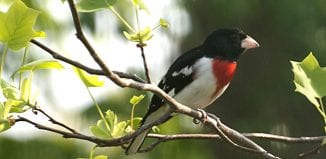How to live while dying: A tribute to my daughter, Claudia
By Elof Carlson
My daughter, Claudia Carlson, died Jan. 6, at the Dawn Greene Hospice in Manhattan, after a two-year battle with ovarian cancer. She attended Ward Melville High School in Setauket and Stony Brook University.
Claudia was born in Bloomington, Indiana, when I was a graduate student at Indiana University. I was married to Helen (nee Zuckerman) Carlson, whom I had met at NYU when we were undergraduates. The marriage failed a year after Claudia was born and Claudia was raised in seven college towns, where Helen taught in English Departments.
I visited Claudia on holidays and when she turned five, she spent her summers with her new family, after I married Nedra (nee Miller) Carlson. She joined us permanently after her mother was diagnosed with lung cancer, at the age of 42, and Claudia began attending Ward Melville High School.
Claudia worked on the SBU newspaper, The Statesman, and its literary magazine, Fortnight. She applied those skills to her work as a book designer, photographer, graphic designer, and cartographer. She worked for The Crown Publishing Group; Farrar, Strauss and Giroux; Oxford University Press and Cambridge University Press. She was a founding member of River Writers of Manhattan, six writers who read their essays, novels, short stories, and poems to each other.
Claudia co-edited “The Poets Grimm: 20th Century Poems from Grimm Fairy tales,” a collection of adult poems on fairy tale themes. She published three volumes of her own poetry — “The Elephant House,” “Pocket Park,” and “My Chocolate Sarcophagus.” She also wrote and illustrated a children’s book, “Avi the Ambulance goes to School,” for her last employer, American Friends of Magen David Adom, the American arm of the Israeli branch of the International Red Cross).
The last three works were written after Claudia’s diagnosis. She told me that she would not die cursing fate or making people uncomfortable. Instead, she would live the fullest for each day she had left. This accounted for the intense productivity in her last two years.
Claudia was treated at Memorial Sloan Kettering Cancer Center until they ran out of experimental drugs to treat her. She elected home hospice as her body weakened. Nedra and I took turns, with our other children, looking after Claudia while her husband was at work. Her sister Christina organized her medical schedule of prescriptions and her visitor’s log. Visitors were limited to one hour so she would not be exhausted.
During these visits, Claudia discussed their work, their reminiscences, and their mutual colleagues. She enjoyed puns and sparkled with wit. She described the return of her hair after radiation for brain metastases as a “reverse Mohawk,” because the most intense radiation ran from her forehead to the nape of her neck. Each two-week trip we took showed how cancer can ravage a body, but Claudia’s courage inspired her colleagues, friends, and relatives, and she showed us how to die with grace and love.
In my mid-84th year, I am not a stranger to the death of those I knew and know. As a biologist, I know it has always been part of the life cycle of all species of plants and animals. The death of all living things is a constant reminder that this is the only life we can guarantee we will have on earth, and it is a gift that can be used wisely, providing a sense of self-worth, making others happy to be around you, and adding to the ever-changing civilization in which we live. I am sure Claudia’s many visitors felt uplifted in their sorrow for the joy she brought to their lives.
Elof Axel Carlson is a distinguished teaching professor emeritus in the Department of Biochemistry and Cell Biology at Stony Brook University.






